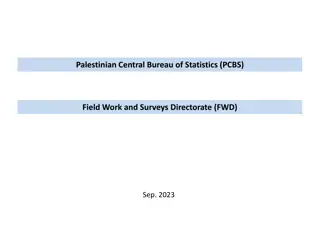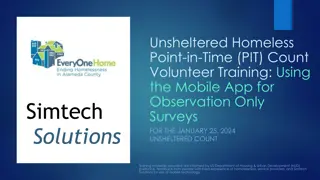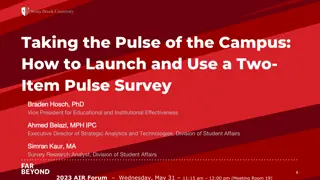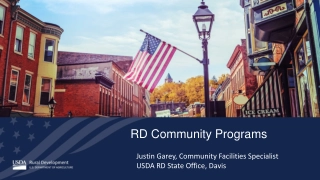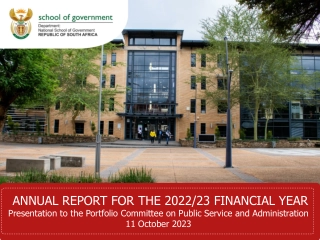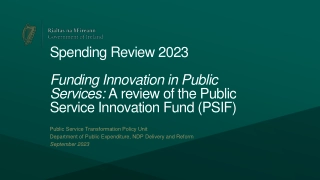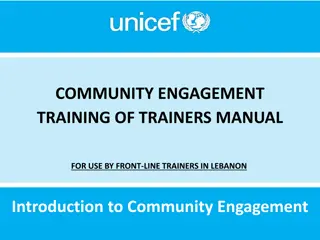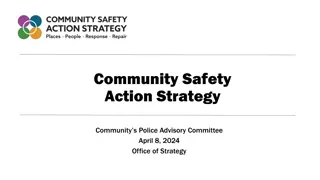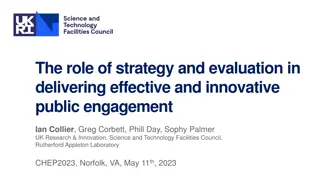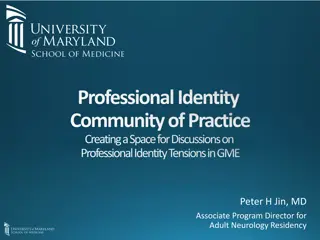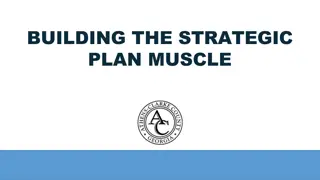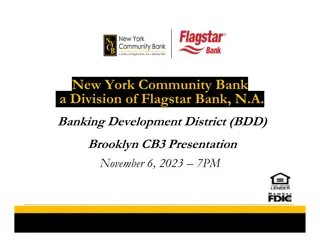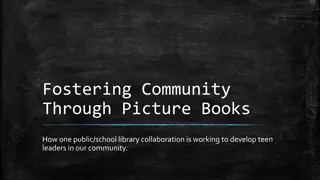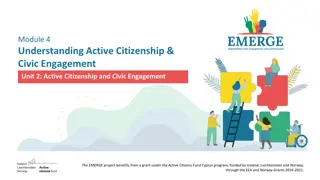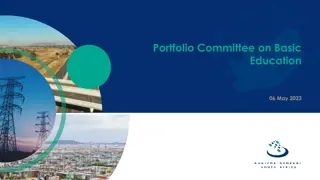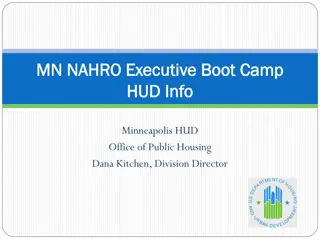Fostering a community of practice around restricted use surveys for the public good
Initiative aims to foster a community of practice around the restricted use of surveys for the public good, promoting collaboration and evidence-based decision-making.
- community of practice
- restricted use surveys
- public good
- collaboration
- evidence-based decision-making
Download Presentation
Please find below an Image/Link to download the presentation.
The content on the website is provided AS IS for your information and personal use only. It may not be sold, licensed, or shared on other websites without obtaining consent from the author. Download presentation by click this link. If you encounter any issues during the download, it is possible that the publisher has removed the file from their server.
Presentation Transcript
Fostering a community of practice around restricted use surveys for the public good Benjamin Feder Jonathan N. Mills
Context Challenged federal government agencies to improve data infrastructure and processes Coleridge Initiative mission: Work with agencies to ensure that data are more effectively used for evidence-based decision-making 1.Secure data facility 2.Applied Data Analytics Training 3.Researcher enclaves
Administrative Data Research Facility (ADRF) Secure cloud-based computing platform designed to promote collaboration, facilitate documentation, and provide information about data use to the agencies that own the data Established by the Census Bureau with funding from the Office of Management and Budget to inform the decision-making of the Commission on Evidence-Based Policy Provides secure access to over 400 confidential government datasets from 50 different agencies at all levels of government
ADRF: Five Safes Framework Safe Projects Safe People Safe Settings Safe Data Safe Exports Trained and Authorized Researchers Only approved researchers are permitted to access project workspaces User onboarding process includes signing data use agreements, terms of use, security training module Data resources are explicitly granted based on project requirements Data resources are strictly in a read-only mode to ensure the integrity of the source data Security protocols follow strict FedRAMP guidelines Non-Disclosive Exports Prevents users from unauthorized removal of any information within the secure environment Export requests are reviewed by data stewards following agency guidelines (e.g. proper cell suppression, no complementary disclosures, rounding and noise applied, no references to disclosive specific observations) Maintain a log of export requests for auditing purposes and to evaluate subsequent requests for complementary disclosure Prevents Unauthorized Use Provides secure methods for agency micro-data transfer Only agency authorized personnel are invited to perform data transfers The transfer of data uses the FedRAMP Authorized, FIPS 140-2 validated, Kiteworks Secure Environment The transfer of data is restricted to upload operations only Additional security protocols include vulnerability scanning and third-party penetration testing Protect Data Confidentiality Data Hashing - A custom stand-alone application simplifies and facilitates the hashing of data prior to transmission to the ADRF Data Stewardship - a web- based portal for data stewards to manage and monitor project and associated resources including project configurations, user activity, user onboarding status, and overall cost of a project on the ADRF etc. Appropriate Use of Data Only agency approved projects and data sets Only approved members can access the isolated project workspaces Controlled access to resources No shared environment between projects and resources
NCES Researcher Enclave NCES previously operated in physical cold room environment COVID highlighted issues with relying on physical locations for research Engagement with NCES began in 2020 with a pilot of 51 researchers Remote enclave now contains Over 300 NCES restricted-use surveys including NAEP, BPS, ECLS, among many others Ready to use format (no longer need to unpack) Supporting documentation 54 RUDLs serving over 150+ active researchers
NCES Workspace Isolation in the ADRF Agency Data All Data Sets Research Objective 1 Research Objective 3 Research Objective 2 Research Project Workspaces shared project database shared project folder Individual user folder shared project database shared project folder Individual user folder shared project database shared project folder Individual user folder Project Workspace P1 Project Workspace P2 Project Workspace P3 Researchers Internal/External I.usr1 I.usr2 I.usr3 E.usr1 E.usr2 I.usr1 I.usr3 I.usr4 E.usr4 E.usr5 I.usr1 I.usr2 I.usr3 E.usr1 E.usr2 E.usr3 Researchers that are part of a given research project are strictly isolated through permissions at the research project workspace level.
Creating Collaborative Networks in the Cloud Community developed standards of use for common data assets Code sharing with attribution and version control Secure, restricted messenger portal
ADRF Shared Project Workspace Isolation Agency Data All Data Sets Research Objective 1 Research Objective 3 Research Objective 2 Research Project Workspaces shared project database shared project folder Individual user folder shared project database shared project folder Individual user folder shared project database shared project folder Individual user folder shared space across workspaces Project Workspace P1 Project Workspace P2 Project Workspace P3 Researchers Internal/External I.usr1 I.usr2 I.usr3 E.usr1 E.usr2 I.usr1 I.usr3 I.usr4 E.usr4 E.usr5 I.usr1 I.usr2 I.usr3 E.usr1 E.usr2 E.usr3 Researchers that are part of multiple research projects (from same underlying data sets) are permissioned at the shared project workspaces level.
Summing up Evidence Act: Data safer, more secure, and more useful and accessible for analysis ADRF can contribute to solution from technological standpoint NCES shifted to remote access through the ADRF due to prior access issues highlighted during the COVID-19 pandemic Working with NCES to further develop networks around data use and experience


